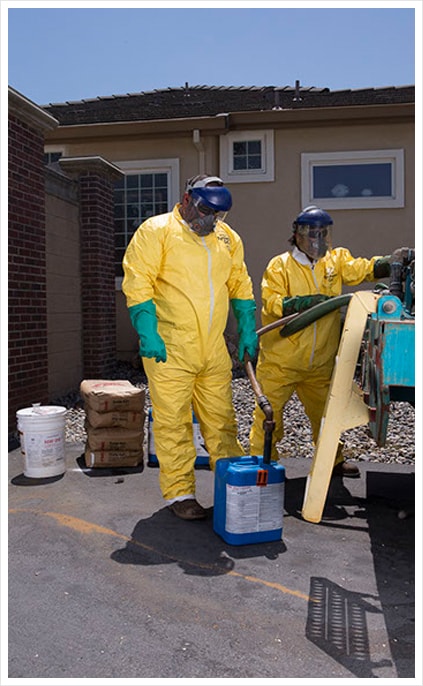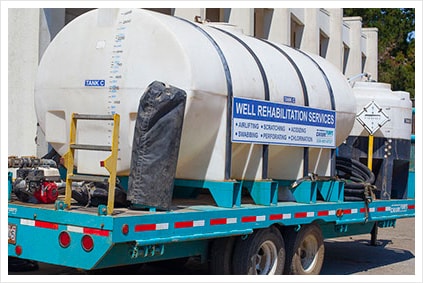WELL REHABILITATION
We have the tools to diagnose and fix your well!
Of all the services provided by Eaton Pumps, well rehabilitation presents some of the greatest challenges. Successful well operation depends on many variables. Consequently, restoring a well back to its full production capacity is not amenable to a “one-size-fits-all” approach.
Eaton Pumps stays informed about newly-developed techniques and products for well rehabilitation. We offer several strategies that we know to be effective. Our custom-fabricated equipment enables all of our rehabilitation techniques to be carried out safely and efficiently.
Many problems cause diminished water quality or reduced production:
• Encrustation from mineral deposits
• Seasonal fluctuations may cause that static water level of the well to fall below the optimal intake depth of the pump bowls.
• Bio-fouling by growth microorganisms
• Physical plugging of “Aquifer” (the saturated layer of sand, gravel, or rock
through which water is transmitted)
• Sand Pumping
• Well casing failure, such as collapse or corrosion
• Damage to the pump
Encrustation and plugging caused by micro organisms have to be treated with a mechanical agitation and a custom chemical program tailored to the specific problem. Physical plugging of the aquifers often requires mechanical swabbing combined with a chemical application. Casing failures may be addressed by use of a Swage tool and sealing patches. Both of these conditions can be characterized as increased sand production and decreased water production.
Using the correct procedures and chemicals for a given problem greatly help to effectively restore a well to efficient long term production. Generic chemical programs, shortcuts like failing to remove the complete pump, and silver bullet fixes can yield short term results with long term headaches.
PERFORMANCE AND EXPECTATIONS
A water well requires maintenance to sustain efficient, adequate water production rates. It can be expected that as a water well ages the rate at which water is pumped , commonly referred to as well yield, can decline.
Declines in well yields can often be accompanied by water quality changes. Water quality changes are indicative of a water bearing zone becoming plugged. Water production will be reduced in the plugged zone, and other water bearing zones are forced to compensate to maintain pump production rates. Often there are differences in quality and or minerals as water-bearing zones within a water well can be recharged from their own unique sources.
Early identification of well issues allow for the planned maintenance during low use or out of season pumping requirements. By completing some basic yearly flow, efficiency, and water quality testing many problems can be spotted early.
Planned well maintenance should always include a video log inspection when the pumping equipment is removed and prior to any well repair or rehabilitation application.
Video inspection can reveal pump bowl depth relative to static water level so that the pump can be reinstalled accordingly. Video inspection can also reveal plugging in the well in which case rehabilitation must be performed before the pump can be reinstalled.


Eaton Drilling Co LLC in Woodland, Contractor license (133783), A General Contractor, C-57 Well Drilling and C-61 Specialty services in California, also other trades Nevada and Oregon. Our equipment conforms to current air quality standards.
Address: 20 West Kentucky Ave, Woodland Ca 95695/ PH: 530.662.6795